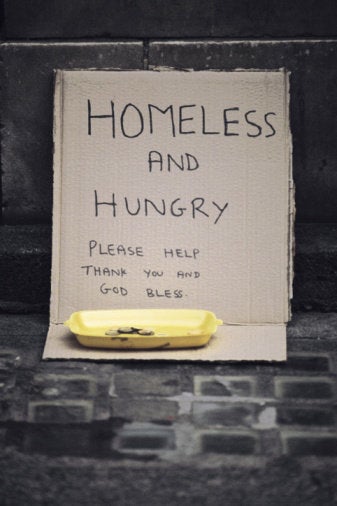
Since the 1970s, as homelessness in the United States increased dramatically, some social service agencies created short-term homeless emergency shelters and transitional housing facilities to house homeless people. Some service providers emphasized the importance of finding jobs for their clients. Their theory, "Jobs First," was that once their homeless clients had jobs, they would be able to afford their own apartments and be housed permanently.
Over twenty years ago, Tanya Tull, president and CEO of Beyond Shelter and founder of Para Los Ninos, developed and implemented an alternative methodology to emergency shelters and transitional housing for the purpose of ending family homelessness that she coined, "Housing First" which:
• provides crisis intervention to address immediate family needs, while simultaneously or soon thereafter assisting families to develop permanent housing and social service plans
• helps homeless families move into affordable rental housing in residential neighborhoods as quickly as possible, most often with their own lease agreements
• then provides six months to one year of individualized, home-based social services support "after the move" to help each family transition to stability. (See, www.beyondshelter.org)
Similar to the housing first methodology is the "permanent supportive housing" approach through which homeless people, regardless of whether they have families, can receive permanent housing with services to help prevent and end homelessness.
Together, the housing first methodology and the permanent supportive housing approach have now become widely accepted by some social service providers as "the way" to end homelessness.
But what about the 35% - 45% of the homeless population who have psychological problems? And what about the homeless people who suffer from physically debilitating problems?
I suggest that the first methodology for homeless people who suffer from mental illness and/or physically debilitating problems should be appropriate psychological and/or medical care and treatment.
Every mentally ill person, housed or unhoused, deserves appropriate care and treatment for their illness, even if that appropriate care and treatment means commitment in a mental institution. Every physically disabled person, housed or unhoused, should receive appropriate care and treatment, even if that means long-term hospitalization.
I asked some people who are or were homeless how they felt about whether one methodology could be utilized as the best way to end homelessness. Their responses follow.
Maurice: "I believe that you know that it [the solution to homelessness] is multi-layered."
Olivia: "One size cannot fit all. Many people are just coming out of violent situations, drug rehab, or prison. [They are] not just jobless.
"Where to put them would be based upon the level and type of psychological problems they may have...
And prison does not train its inmates to behave appropriately for mixed-gender society. Mental institutions with therapists and staff do.
"You must separate those with severe psychological problems from those without. Otherwise, you create an environment that is psychologically, emotionally and physically dangerous to those who may be leaving stressful situations...
"[Some people] believe that healthy clients living in close quarters with those still in recovery from drugs, violence or prostitution will positively affect a change in the ill. But, we're not psychologists and it is merely putting new prey in the hands of predators recovering from such."
Barbara R.: "The concept of "one size fits all" is ludicrous, asinine and insane. Try and take the dynamics, for example of women, children, men separately, whole families, and the new trans-gender population. How can one remedy cure all the ailments?"
Melanie: "The solution to the homeless issue is to view each individual within the homeless population as unique, and in so doing, properly address his/her situation in such a way that is in accordance with his/her vision of happiness."
Pamela: "The myth that one size fits all as a solution to homelessness is definitely not possible because the requirements to bring a person from homelessness into self-sufficiency is a process that inherently must be individualized.
"Individuals need a community network that is able to supply the needs of a wide variety of services that are available to bring them from the state of homelessness into self-sufficiency."
Tim: "Can't get a phone call. How can my needs be met?"
I believe that all social service agencies that are doing good things for homeless people are doing something great.
I further believe that we should continue, support and fully fund housing first and permanent supportive housing projects.
Finally, I believe that in order to help homeless people who have many different needs, we need simultaneous implementation of many kinds of approaches and methodologies, including the following three steps to ending homeless:
1. Public toilets, showers and laundries
2. Housing, transitional and permanent, with supportive services
3. A self-sufficient village on an abandoned military base
• where homes and apartments would be available for families and individuals
• where a building would be available with services for mentally ill people
• where a building would be available with services for those people with dual diagnosis
• where a building would be available to house and provide for homeless orphans
• where light industry could provide employment for the residents
• nearby an established school district where the youth could attend classes
• run at first by a council of nonprofit agencies and then, as soon as practical, run by the duly-elected representatives of the self-sufficient village.
I look forward to your comments.
Thank you,
Christine